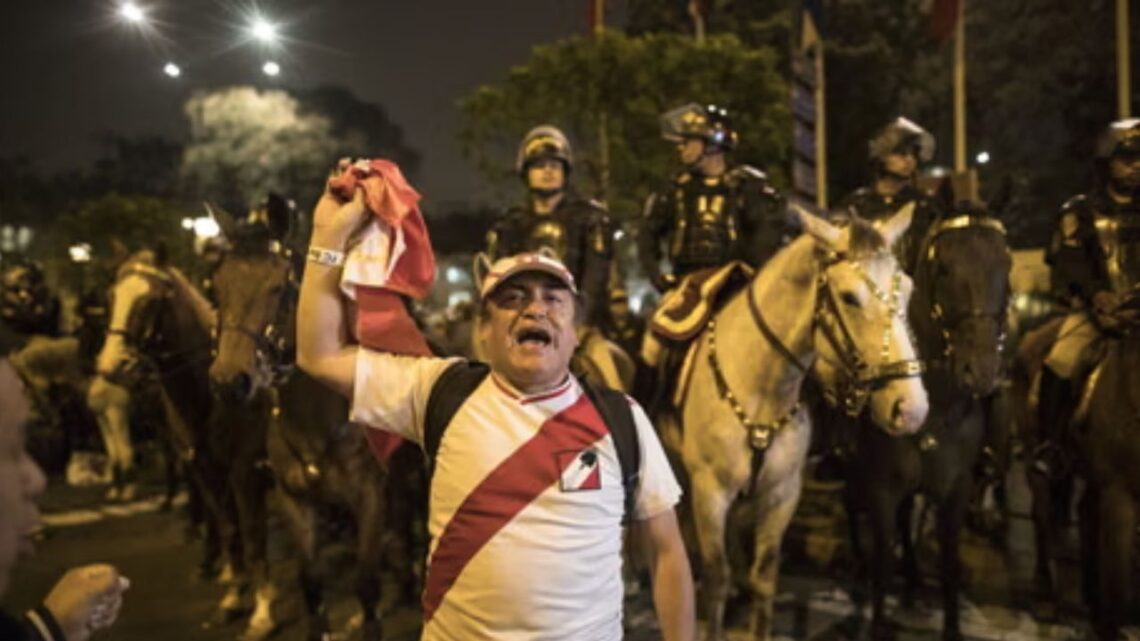Peru is currently engulfed in a security meltdown that is not only endangering lives — it is tearing apart political institutions. What started as isolated acts of gang violence and extortion has ballooned into a full-blown political crisis.
The removal of President Dina Boluarte from office in October 2025 is only the most visible symptom of the rot spreading through Peru’s governance.
This article dives deep into the facts, figures, and human stories behind this crisis — and explores whether the new interim government can reverse the spiral.
The Anatomy of Insecurity in Peru
1. Soaring Extortion and Organized Crime
- Since 2022, reports of extortion and racketeering have surged by 540 %, and in some districts in Lima by as much as 900 %.
- In San Juan de Lurigancho (a densely populated district in Lima), there are an estimated 150,000 moto-taxis. If each pays 3 soles/day, that amounts to 450,000 soles daily siphoned off by criminal gangs.
- Bus drivers, musicians, shopkeepers, micro-entrepreneurs — no one is safe. One veteran bus driver, Julio Campos, said he pays 30 soles per day to gangs just to stay alive.
2. Surge in Killings and Contract Murders
- In 2024, the homicide rate in Peru doubled compared to the pre-COVID level, with more than 2,000 murders recorded.
- Many of these are sicaríato (contract killings), linked to gang violence and territorial disputes.
- Between January and July 2025, 65 bus drivers were murdered, highlighting how violence has seeped into daily life.
3. Expanding Criminal Networks — Domestic & Cross-Border
- The Venezuelan gang “Tren de Aragua” has entrenched itself in Peru, branching into illegal mining, human trafficking, and drug trafficking.
- Criminal groups are not only local thieves — they are criminal networks competing for control over mines, drug routes, and urban territories.
Political Collapse: How Insecurity Toppled a President
1. The Weak Response of Dina Boluarte’s Presidency
- Dina Boluarte rose to power in December 2022 after the removal of Pedro Castillo.
- Her approval ratings were among the lowest globally by mid-2025 (hovering between 2 % and 4 %).
- She was widely criticized for offering trite “advice” like “Don’t answer unknown numbers; ignore messages” in the face of extortion demands.
- Her government passed laws accused of weakening judicial independence and cooperation in criminal investigations.
2. The Concert Shooting & Public Outrage
- On October 8, 2025, a shooting at the Círculo Militar de Chorrillos wounded 5 people during a concert by the cumbia band Agua Marina.
- That event, seen by many as a symbol of the government’s total failure to protect citizens, intensified protests.
- The next day, Congress invoked “permanent moral incapacity” and removed Boluarte by a 124-0 vote on October 10, 2025.
- She became the fifth Peruvian president to be ousted under this constitutional clause.
- Congress then appointed José Jerí, 38, president of Congress, as the interim president until July 2026.
3. Interim Government’s Tough Talk — and Skepticism
- One of Jerí’s first acts: oversee prison raids seizing drugs, contraband phones, and weaponry from Lima’s prisons (Ancón I, Lurigancho, El Milagro, Challapalca).
- He declared that the “main enemy is out on the streets” and vowed to declare war on criminal gangs.
- But critics argued he is part of the same political elite, having supported many of the laws passed under Boluarte.
- Jeri himself is under investigation for illicit enrichment, and a 2024 rape complaint was dismissed under questionable circumstances.
Can the New Government Change the Course?
1. Immediate Steps Taken
- Coordinated prison raids in key facilities, seizing illicit contraband.
- Jerí pledged security reform and confrontation with gangs.
- He is trying to assemble a transitional government to prepare for elections in April 2026.
2. Challenges & Doubts
- His coalition supported many controversial laws under Boluarte — leading to skepticism about real change.
- Many believe that without judicial, police, and legislative cleansing, the cycle of impunity + violence will continue.
- The public’s demand is no longer merely for law enforcement — but for structural reform of institutions.
Peru’s crisis is not just about crime — it’s a civic implosion. When gangs can challenge the state, when lawmakers are seen as complicit, and when citizens live in fear daily, democracy itself is threatened.
The ouster of Dina Boluarte signals that Peruvians will no longer tolerate paralysis and collusion. But replacing one leader is not enough.
The real test for José Jerí’s interim government — and for whoever is elected in April 2026 — is whether they can dismantle the system that allowed insecurity to fester: reforming the police, judiciary, legislature, and public trust. The path forward is perilous, but the stakes could not be higher.
